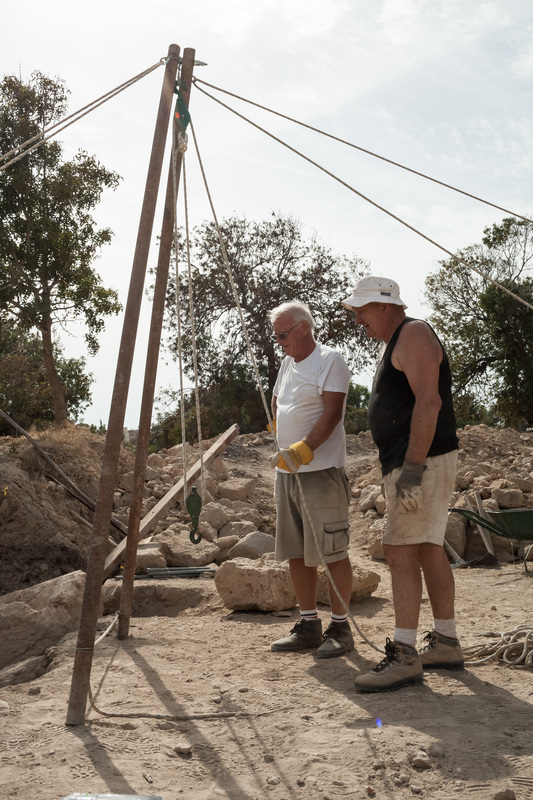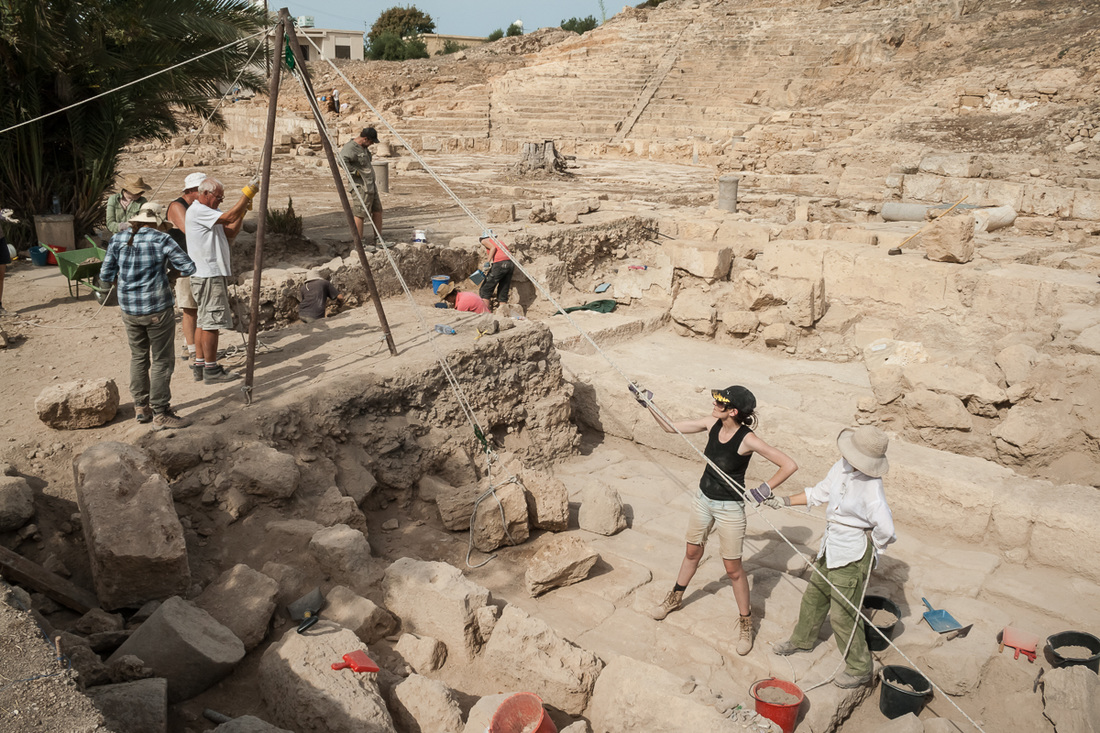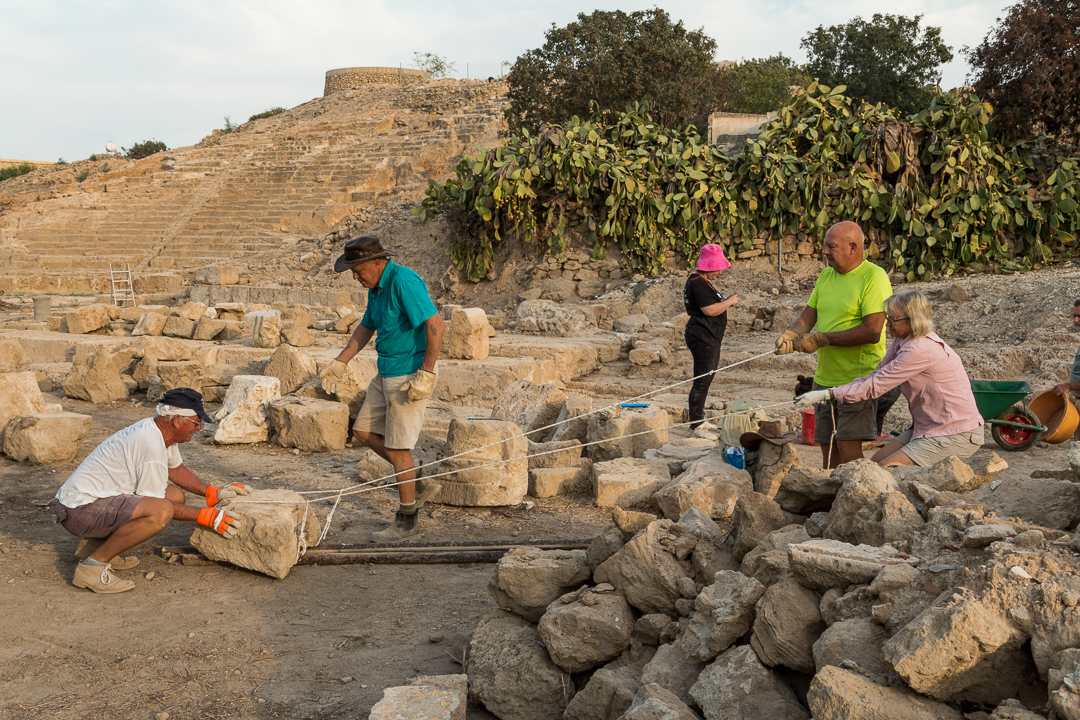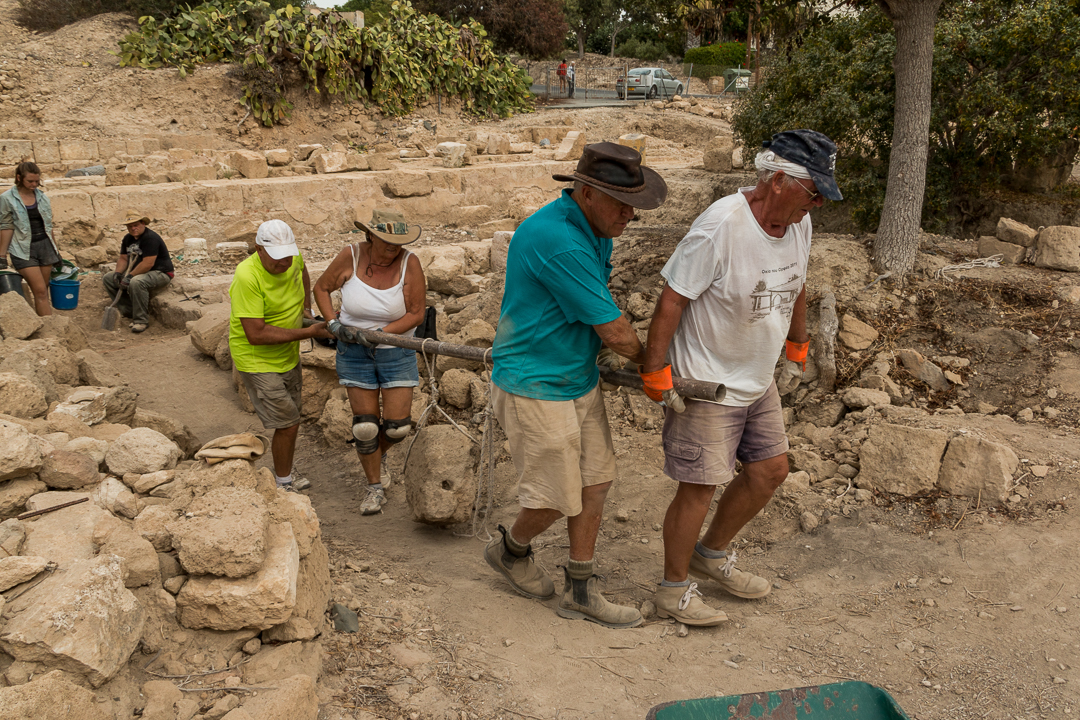For every 10m x 10m trench there is 100 cubic metres of waste – roughly equivalent to 100 tons – for every metre you dig down. In many areas of the Paphos Theatre there are also large rocks and building blocks as earthquake rubble. All this material needs to be removed from the excavation area and is usually stockpiled until it can be removed from site.
There is a collection of rocks and architectural stones that were excavated out of the nymphaeum, and need to be cleared to allow further excavation of the Roman road. The average weight of the blocks is more than 100 kg and some are in excess of 200 kg.
The architectural stone – that is, the building blocks with special design features – are retained for further study. The unworked stone has been stockpiled awaiting disposal.
Videos of the operation of the bi-pod can be found here and here!
We can have three people on each end of the bar. Conceptually, if each person is able to lift 50 kg, and we use a total of six people, we will be able to lift a total weight of 300 kg.
Nothing stays the same, however, and we are now looking at using two bars each with four people to lift some of the heavier stones.
The approved method for using the modified bi-pod lift:
It's just a jump to the left.
And then a step to the right.
With your hand on your hips.
You bring your knees in tight.
But it's the pelvic thrust.
They really drive you insane.
Let's do the Time Warp again.
Dr Bruce Brown
Researcher




 RSS Feed
RSS Feed